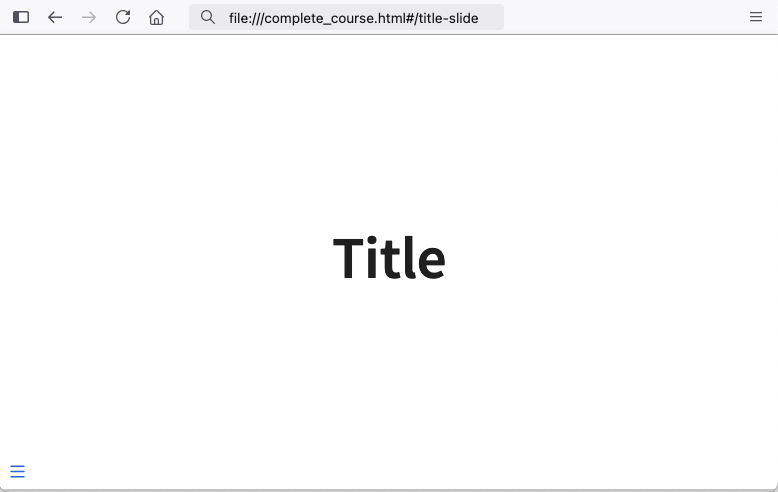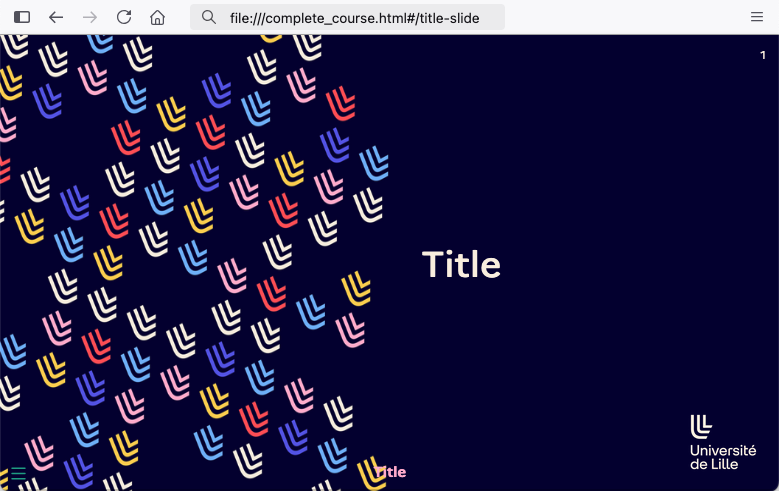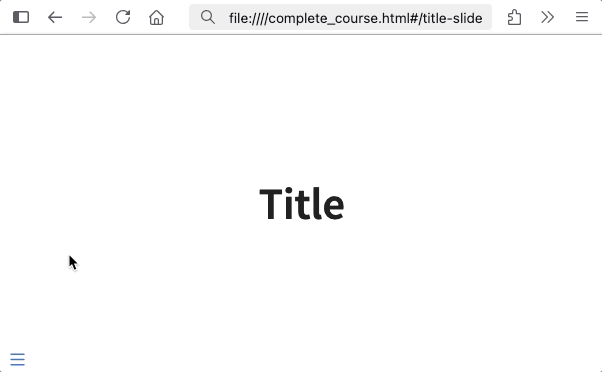Using quarto themes
Let’s say the default quarto theme is somewhat not your style, how could you include your preferred quarto theme ?
To do so, you first need to install your target extension on your machine from your terminal, like you would do for a single quarto revealjs file rendering.
Great, now you can use this theme with squash by
providing the target theme as output_format and the path to
the _extensions folder as ext_dir.
html_output <- compile_qmd_course(
vec_qmd_path = qmds,
output_dir = temp_dir,
output_html = "complete_course.html",
output_format = "lille-univ-dark-revealjs",
ext_dir = "path/to/_extensions/"
)My slide deck will now bear my custom theme !
default theme slides

custom theme slides

Using quarto plugins
Cool right? But let’s go further and add a couple plugins in the
_extensions folder!
You can now list these plugins in the metadata_template
parameters and integrate them in your presentation.
The metadata_template input list will be converted as
yaml-like parameters and provided to the rendering machinery, as if you
had directly written them in the header of your quarto file.
html_output <- compile_qmd_course(
vec_qmd_path = qmds,
output_dir = temp_dir,
output_html = "complete_course.html",
metadata_template = list(
`revealjs-plugins` = list("confetti", "pointer")
),
ext_dir = "path/to/_extensions/"
)Now, I can throw confetti by pressing c and get my
pointer with q 🎉.

A note on extensions
Metadata and parameters set in the
compile_qmd_coursewill supersede the parameters detected inside the quarto header and/or the quarto project metadata files.In order to use themes and plugins, you can only provide a single
_extensionsfolder via theext_dirparameter, so make sure all the necessary plugins and themes are installed in there.You can edit the metadata a the template level (
metadata_templateinput) and/or the individual chapter level (metadata_qmdinput). It is usually best for plugins and themes to be applied at the template level (which will be the wrapper of the main html output file). Chapter-level metadata may be usefull to remove some overlapping content (e.g. logo, footer).-
When rendering a quarto file with extensions, squash will provide access tho the target
_extensionsfolder. Several cases can be triggered :- the file is part of a quarto project: the
_extensionsfolder is copied in the quarto project root and cleaned after rendering - the file is not part of a quarto
project: the
_extensionsfolder is copied in the file folder and cleaned after rendering - in both cases, if some of the extensions are already present in the target location, a note will be raised in the console and squash will use the existing extensions without overwriting them.
- the file is part of a quarto project: the
